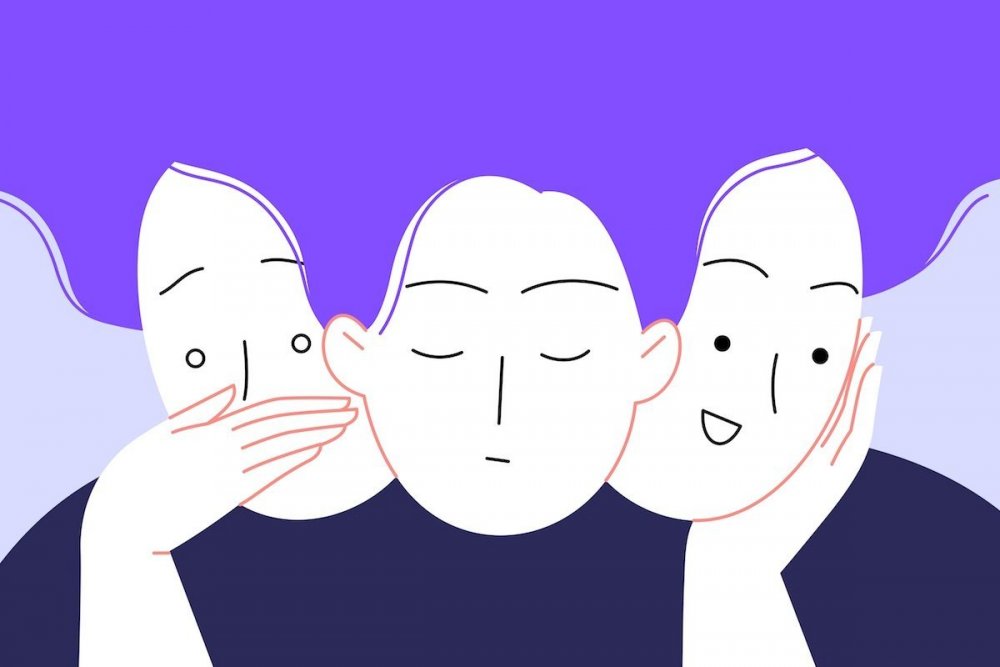An often invisible illness, diagnosing quiet borderline personality disorder isn't easy. Luckily, the treatment for this condition can be, as psychologist Stanislava Puač Jovanović explains...
I have known a few people with borderline personality disorder (BPD) in my life. I can say with certainty that they suffered — as did those close to them.
However, thanks to the explosive nature of the disorder, however unpleasant it may be, BPD did not stay hidden. Some of them were diagnosed and received treatment. More importantly, they learned to understand the nature of their unpredictable emotions and reactions.
I probably also know a few people with quiet borderline personality disorder (QBPD). Unfortunately, I cannot say that I know who they are. Are they aware that what they are going through is a disorder? Quite possibly not. Do their loved ones understand what is happening? They might not have a clue.
That's because quiet borderline personality disorder is a difficult but often invisible ordeal. As this article will make clear, it bears the burden of the BPD. Still, it stays concealed — often even from the affected person themselves. Yet, the moment you understand QBPD and its manifestations, the path towards treatment opens.
So, what is quiet borderline personality disorder?
What is quiet borderline personality disorder and how is it diagnosed?
Before we can hope to understand quiet borderline personality disorder, we need to grasp the concept of a personality disorder as such.
Unlike some other mental disorders that come and go, personality disorders are usually enduring. One of the criteria for diagnosis states:
“The impairments in personality functioning and the individual’s personality trait expression are relatively stable across time and consistent across situations.”
Personality disorders are pervasive, unchanging, and present at least from adolescence. They form an inner experience and behaviour pattern deviant from a person’s cultural norms.
“A person affected by quiet borderline personality disorder aims hostility and anger at themselves. Feeling sombre and dejected is often mixed with a buried feeling of anger and disappointment towards others.”
In other words, it seems to be the structure of the individual’s personality that is affected. A personality disorder is apparent throughout life and across different contexts. A person who is, for example, narcissistic will act that way at work, in love, with family and strangers. Those who know them will tell you that it is how they have been forever.
What is borderline personality disorder?
QBPD is a variation of BPD. Therefore, we need to be clear on what the disorder entails. Borderline personality disorder is a syndrome of disordered functioning in relationship to oneself and others. To meet the diagnostic criteria, the affected person has to manifest the following symptoms:
- Impairments in self-functioning. They can be unsure of who they are as a person. They might feel empty inside and succumb to excessive self-criticism. Sometimes, goals, aspirations and career plans are unstable. A person with BPD keeps changing their direction in life.
- Impairments in interpersonal functioning. They lack empathy or have severe problems in establishing meaningful close relationships.
- Being emotionally unstable, anxious, depressive, or fearing rejection and separation.
- Disinhibition, meaning that they are highly impulsive and often take excessive risks.
- Hostility, anger, and irritability.
Subtypes of BPD
The current classification of mental disorders does not divide the BPD into subtypes. Nonetheless, the official criteria could be combined differently. As a result, individuals with BPD are often very unalike.
This is probably one of the reasons why borderline personality disorder has long been notoriously under-detected and misdiagnosed in clinical practice.

Aiming hostility at oneself is a sign of QBPD shutterstock/airdone
It is also why many popular psychology authors voiced their opinion about the subtypes of BPD.
Some scholars and practitioners also argue that borderline personality disorder should be divided into three subtypes based on the dominant cognitive mechanisms in their foundations. A 2017 study determined three clusters of BPD patients with distinct profiles:
- Most patients were those with the “core BPD” features, that is, typical borderline personalities.
- A second “Extravert/externalising” subtype was characterised by high levels of histrionic, narcissistic, and antisocial features.
- A third, smaller subtype had schizotypal and paranoid features — therefore, it is named “Schizotypal/paranoid”.
Million and Davis have proposed, based on extensive professional expertise in the realm of personality disorders, that there are four subtypes of BPD:
- Discouraged or “quiet” borderline
- Impulsive borderline
- Petulant borderline
- Self-destructive borderline
So, what are the symptoms of the quiet BPD subtype?
Symptoms of QBPD
Most professionals and laypeople would think of someone with BPD as an explosive, violent and hostile person. An unpredictable and impulsive human ticking bomb. However, it appears that there are those affected by the disorder whose suffering remains largely invisible.
In quiet borderline personality disorder, all the symptoms of the BPD are directed inwards. According to Million and Davis, a person affected by quiet borderline personality disorder aims the borderline hostility and anger at oneself. They might act clingy and form codependent relationships. Feeling sombre and dejected is often mixed with a buried feeling of anger and disappointment towards others. However, they do not let it show. Their anger is more likely to be manifested as self-harm and suicide attempts than aggression towards others.
Could you be living with QPBD?
Here are some of the signs that suggest you could be living with quiet borderline personality disorder:
- You are very good at hiding your true emotions. You present a composed façade at all times. You might not even be able to recognise or describe your feelings correctly (alexithymia), so they fester inside.
- You are high-functioning and successful; a perfectionistic even.
- When emotional pain becomes too much to bear, you detach from the world and your inner experiences. You may feel like you were in a dream or a movie, unable to feel connected.
- You may be a people-pleaser. You need to be liked, and you yearn for appreciation from those you fall for. You experience bouts of anxiety at the slightest sign of disapproval.
- Your buttons are easily pushed around other people. You know that you are prone to feeling hurt, insulted or humiliated. To prevent it, you might prefer distancing yourself from others.
- You might be putting people into one of the two categories — they are either impeccable or atrocious. It is a mechanism called “splitting” or polarised thinking.
- You might be so profoundly afraid of being abandoned that you avoid getting close to others altogether. It protects you from hurt.
- You tend to feel irrational guilt and self-loathing. For this reason, you could be at risk of engaging in self-harming behaviour, including having suicidal thoughts. (If this is the case, please reach out to any local service or organisation that deals with mental health to help you get your way out of that dark path).
- Your priorities and interests change erratically. Your commitment changes on a day-to-day basis. Be it a project, a hobby, or a person, QBPD comes with a lack of consistency in dedication. You seem utterly devoted to something, only for it to fall into oblivion in the next moment.
- You crave control and order. Situations in which you do not know what to say or do make you feel uneasy. In effect, you are not living spontaneously.
Where does the difference between the typical BPD and the quiet variant come from? One possible explanation is Lynch and colleagues’ work on undercontrol versus overcontrol in clinical settings. In short, the majority of those affected by BPD (the typical syndrome) are undercontrolled. They are impulsive, erratic and dysregulated. Nonetheless, some people are overcontrolled; meaning that they are reserved, hard to engage, seemingly emotionally flat. Yet, their inner world is as tempestuous as that of the undercontrolled individuals.
Treatment for QBPD
At this point, we return to the statement made in the introduction. Unfortunately, the quiet variant of BPD is even more undetected compared to BPD as a whole. Why? It is simple — people living with the condition do not let it show. They rarely (if ever) seek help. They overcontrol.
Nonetheless, even if it feels unnatural, if you recognise the symptoms mentioned above, it is vital for you to reach out. And if someone you know seems to be affected by QBPD, try pointing them out towards learning about the disorder and getting professional help to deal with it.
“Unfortunately, the quiet variant of BPD is even more undetected compared to BPD as a whole. Why? It is simple — people living with the condition do not let it show. They rarely (if ever) seek help.”
Unfortunately, not enough is understood about QBPD to determine which psychotherapy modality would work best. The following approaches were scientifically explored and are used in clinical practice for the treatment of BPD. In addition to psychotherapy, medication is sometimes prescribed.
1. Cognitive-behavioural therapy (CBT)
The basic principle of CBT is to work on modifying the thinking and behavioural patterns that are unhelpful and perpetuate the disorder.
According to a systematic review of 45 studies, CBT is beneficial in treating personality disorders in general — and BPD in particular. The findings of another study confirmed that CBT could help decrease the symptoms, distress, anxiety, suicide ideation and dysfunctional beliefs typical of BPD.

Quiet Borderline Personality Disorder can be treated
2. Dialectical behaviour therapy (DBT)
DBT is one of the CBT modalities. It was developed specifically to treat BPD. In 2016 it was still the only empirically supported treatment for BPD. It targets the unstable sense of self, chaotic relationships, fear of abandonment, emotional lability and impulsivity (such as self-injurious behaviours).
During the therapeutic process, the clients develop skills such as mindfulness, interpersonal effectiveness, emotion regulation, and distress tolerance.
3. Radically Open Dialectical Behavioural Therapy (RO-DBT)
The previous two modalities are implemented in treating BPD in general. The quiet variant could also benefit from them, given that the core issues are shared across the syndrome. However, RO-DBT was developed specifically for disorders of overcontrol. The authors designed it to address difficult-to-treat mental health conditions. And yes, QBPD is difficult to treat.
The approach focuses on developing mental flexibility, openness, healthy emotional expression and social connectedness.
Take control over your QBPD
Living with a quiet borderline personality disorder is not an easy thing to do. BPD is known to cause severe problems in the person’s relationship with themselves and the world. When you keep all those BPD emotions and thoughts within, pushing through the day can sometimes feel like Sisyphus work.
I will not pretend quiet borderline personality disorder will go away in the blink of an eye for the sake of pep talk. However, you can learn to develop a psychologically healthier way of being. Adequate support and treatment can teach you how to rebuild your view of the world. With a change in your mindset, you can nurture close relationships with others based on empathy and respect.
Although every personality disorder is a persistent companion, it does not have to determine your future. All you need to do is take one simple step now. Open yourself up to a fuller and richer life. Reach out. •
Main image: shutterstock/Olga W Boeva
happiness.com | The fine art of being: learn, practise, share
Are you a happiness.com member?
Join free now and:
■ enjoy our happiness magazine
■ share and support in our happiness forum
■ Develop with free online Academy classes
Written by Stanislava Puač Jovanović
 Stanislava Puač Jovanović has a master’s degree in psychology and works as a freelance writer and researcher in this area. Her primary focus is on questions relating to mental health, stress-management, self-development and well-being.
Stanislava Puač Jovanović has a master’s degree in psychology and works as a freelance writer and researcher in this area. Her primary focus is on questions relating to mental health, stress-management, self-development and well-being.


Join the conversation
You are posting as a guest. If you have an account, sign in now to post with your account.
There are no comments to display.